- Home
- stock market
- RANKED: The economies of all 50 US states and DC from worst to best
RANKED: The economies of all 50 US states and DC from worst to best
51. Mississippi

50. West Virginia
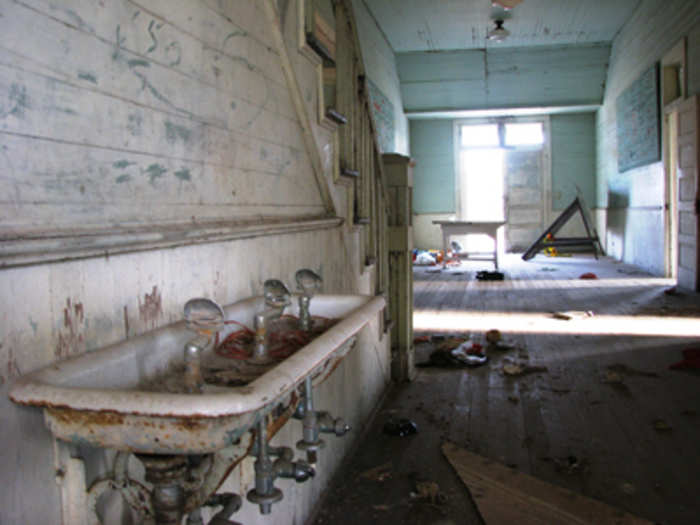
West Virginia's economy revolves around the coal industry, with underground and surface coal mining coming in as the most disproportionately important industries in the state.
West Virginia was one of just two states in which fewer people were working in June 2015 than in June 2015, with a drop of 1.2% in nonfarm payrolls over the year. The Appalachian state was also one of only three states where housing prices dropped between Q1 2014 and Q1 2015, and had the biggest drop in the state housing price index, falling 3.90%. One bright spot was that GDP grew by 5.1% in 2014, higher than the national rate of 2.2%.
49. Alabama
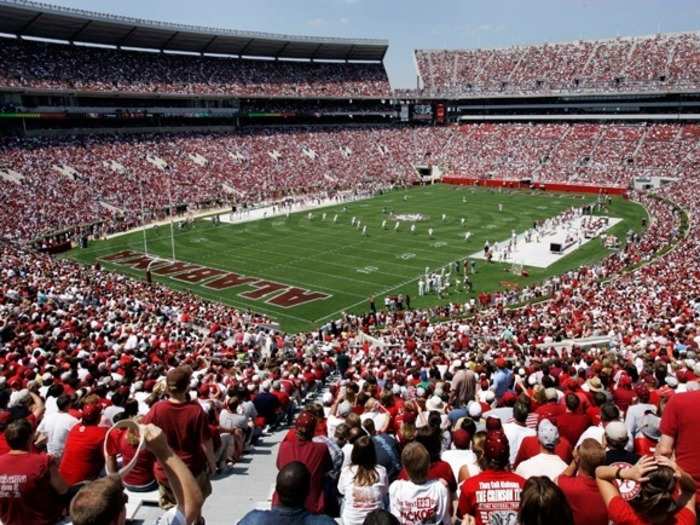
Alabama has several manufacturing industries, including textile mills, logging operations, and poultry hatcheries.
Alabama's 2014 per capita GDP of $41,127 was far lower than the US per capita GDP of $54,307. GDP growth was also slower than in other states, increasing just 0.7% in 2014. Alabama's housing market remains lackluster, with housing prices rising just 1.8% between Q1 2014 and Q1 2015.
48. New Mexico
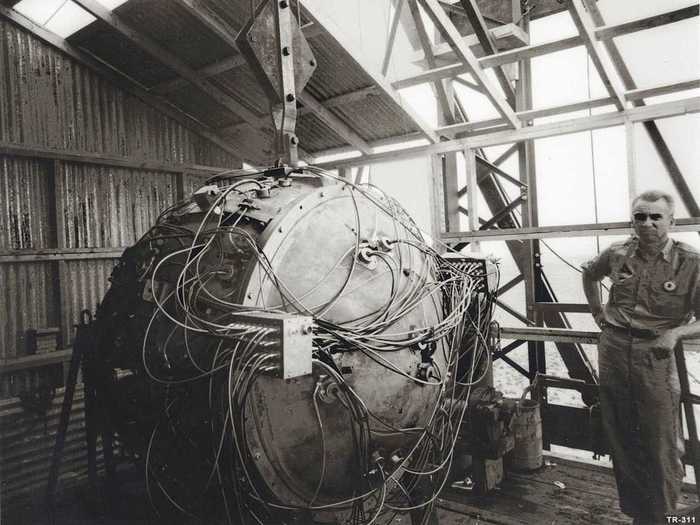
New Mexico has a large mining sector: About 18,000 New Mexicans are employed in support activities for mining. The state, home to research institutions like the University of New Mexico and the Los Alamos National Laboratory, also has a disproportionately large number of people employed in science, with about 22,000 private sector physics, engineering, and biological-research employees.
New Mexico's June unemployment rate of 6.4% was a bit higher than the national rate of 5.3%, and its housing market was sluggish, with home prices rising just 1.46% between Q1 2014 and Q1 2015. One bright spot is wage growth, with the weekly average wage in the state jumping 4.4% between Q4 2013 and Q4 2014.
47. Missouri

Missouri is home to 26 Fortune 1000 companies, including Emerson Electric, agricultural giant Monsanto, O'Reilly Automotive, and Energizer.
Missouri had a low rate of employment growth, with nonfarm payrolls growing just 0.8% between June 2014 and June 2015. The state was slightly below average on all our other metrics, like its 5.8% June 2015 unemployment rate, higher than the national rate of 5.3%.
46. Maine

Shipbuilding and maintenance jobs are disproportionately common in Maine, home to Portsmouth Naval Shipyard, one of the four main shipyards used by the US Navy. The federal government employs about 4,700 workers in these industries.
Maine saw low GDP growth in 2014 of only 0.2%. Maine's housing market was also slow, seeing only a 1.07% increase in housing prices. Maine's average weekly wage of $826 was also a bit lower than the national average of $1,035.
45. Arkansas

While home to corporate giants like Walmart, which sits at the very top of the Fortune 500 list, and food-processing conglomerate Tyson Foods, Arkansas' economy overall is weaker than that of most states.
Arkansas' per capita GDP was $40,924, well below the US GDP per capita of $54,307. Similarly, the state's average weekly wage of $807 was quite a bit lower than the US average wage of $1,035 per week. However, the state's wage situation is improving: Wages rose by 4.5% from Q4 2013 to Q4 2014, the fifth highest wage-growth rate among the states.
44. New Jersey
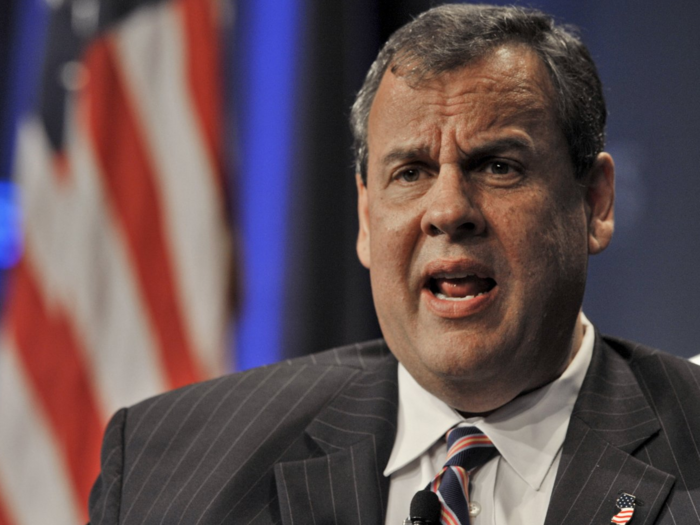
The Garden State is home to the headquarters of several large corporations, including Johnson & Johnson, Prudential Financial, Merck, and Honeywell International. Although Atlantic City has seen better times, about 23,000 New Jerseyans are employed at casino hotels, about three times the national rate of employment in this industry.
New Jersey had some rather extreme scores on our measures. While New Jersey's GDP per capita of $61,433 and average weekly wage of $1,211 were among the highest in the country, the growth rates for these two measures were far weaker: GDP grew just 0.4% in 2014, and wages rose just 2.0% between Q4 2013 and Q4 2014, much lower than the 3.5% change nationwide.
43. Kansas
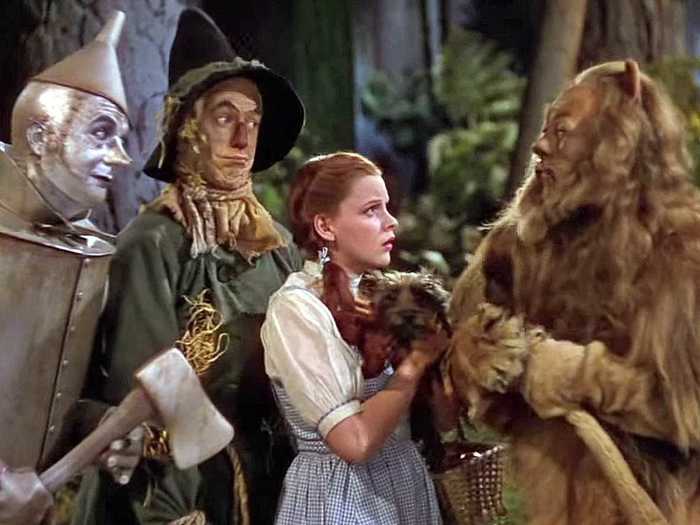
Kansas' economy has huge agriculture and aerospace sectors. Among the most disproportionately common jobs in Kansas are livestock wholesalers, cattle ranchers, turkey producers, and airplane manufacturers.
Kansas' over the year wage growth of 2.6% was somewhat weaker than the national rate of 3.5% between Q4 2013 and Q4 2014. Job growth was also below average, with nonfarm payrolls growing by only 0.8% between June 2014 and June 2015. Despite the slow change in employment, Kansas' June 2015 unemployment rate of 4.5% was quite a bit lower than the national 5.3% rate.
42. Virginia

With its proximity to the nation's capital and several key military installations, it's not surprising that government and military activities play a disproportionately large role in Virginia's economy. About 38,000 Virginians are employed in the shipbuilding industry, and 64,000 are employed by the federal government in national-security positions.
This heavy government and defense presence also shows up in Virginia's Fortune 1000 companies: Among the big companies headquartered in Virginia are the government-backed Freddie Mac, and defense contractors General Dynamics and Northrop Grumman.
Virginia's job growth was mediocre and its GDP growth was weaker than most states. Nonfarm payroll jobs increased by 1.3% between June 2014 and June 2015, and the state's GDP was flat in 2014, growing 0.0%. A more positive measure for Virginia was the state's average weekly wage of $1,057, just above the national average of $1,035.
41. Illinois

Several iconic companies call Illinois home, like airplane builder Boeing, pharmacy giant Walgreens, insurance companies State Farm and Allstate, and the troubled burger sellers of McDonald's.
While Illinois' weekly average wage of $1,089 is better than that of most other states, wage growth has been slower, with wages rising just 2.8% between Q4 2013 and Q4 2014.
40. Arizona

Anchored by the metropolis of Phoenix, Arizona has a diverse economy. Among the most disproportionately large industries are mining, professional organizations, financial processing, and electronics manufacturing.
Arizona's housing market is recovering well, with housing prices rising 6.03% between Q1 2014 and Q1 2015, a bit faster than the national change of 4.96%. However, the state's GDP per capita is somewhat lower than in other areas, at just $42,213, about $12,000 lower than the US per capita GDP of $54,307.
39. Louisiana

Shipping services, sugar farming and processing, and petroleum refining and processing are three of the most disproportionately large industries in Louisiana.
Louisiana's June 2015 unemployment rate of 6.4% was higher than that of most states. The state also had a below average year-over-year job growth rate, with nonfarm payrolls increasing by only 0.7% between June 2014 and June 2015.
38. Alaska
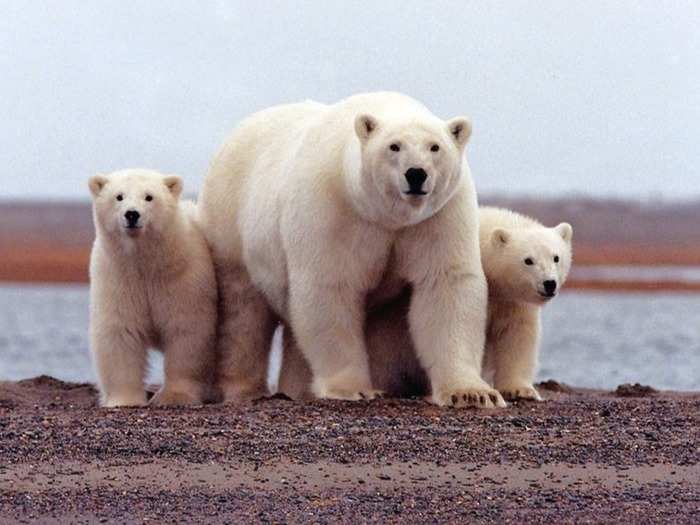
Mining, fishing, and seafood processing are among the most disproportionately large employers in Alaska.
While Alaska's $77,477 GDP per capita was the second highest in the country, the state's GDP was one of only two that were lower in 2014 than 2013, with a 1.3% drop in economic activity over the year. The state's unemployment rate of 6.8% was the fourth highest among the states.
37. Maryland

Like Virginia, Maryland's proximity to Washington means a huge federal presence in the state: 15 of the 20 most over-represented industries in Maryland are federal government employers.
While Maryland's $1,113 average weekly wage and $58,335 GDP per capita were both quite high, the state was one of only three to see house prices drop between Q1 2014 and Q1 2015, with the house price index dropping 0.38%. This housing market weakness along with middling scores on our other metrics kept the state from rising higher in our rankings.
36. Pennsylvania
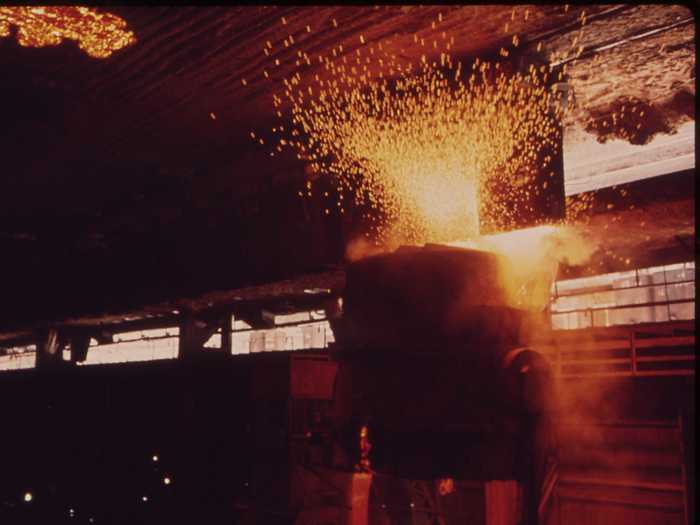
Pennsylvania is home to several storied US corporations, like US Steel, Comcast, Rite Aid, and Hershey. This heritage shows up in the industries that employ a disproportionately large number of workers in the state: about 13,000 Pennsylvanians work in iron and steel mills, and about 8,000 in chocolate candy manufacturing.
Pennsylvania was pretty middle of the road on most of our metrics. The state's June 2015 unemployment rate of 5.4% was just above the national rate of 5.3%, and the Q4 2014 average weekly wage of $1,013 was very close to the national average wage of $1,035.
35. South Carolina
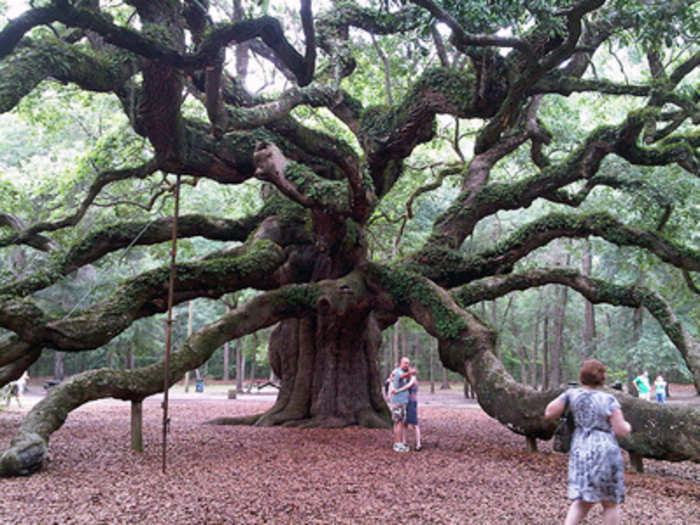
South Carolina has a disproportionately large manufacturing sector. Various types of fabric and textile manufacturing, tire manufacturing, and fabricated metal product manufacturing all employ a higher proportion of South Carolinians than of Americans as a whole.
While South Carolina's housing market was strengthening, with a 6.46% increase in housing prices between Q1 2014 and Q1 2015, the state's unemployment rate of 6.6% was the sixth highest among the states, and its per capita GDP of just $39,380 was the third lowest.
34. Indiana

Manufacturing is still a big part of Indiana's economy: About 21,000 Hoosiers are employed in motor vehicle power train manufacturing, another 34,000 in auto body manufacturing, and about 20,000 in iron and steel mills.
Indiana was a mixed bag on our measures. GDP growth was sluggish at just 0.4% in 2014. On the other hand, average weekly wages grew 3.9% between Q4 2013 and Q4 2014, a bit higher than the national rate of 3.5%.
33. Rhode Island
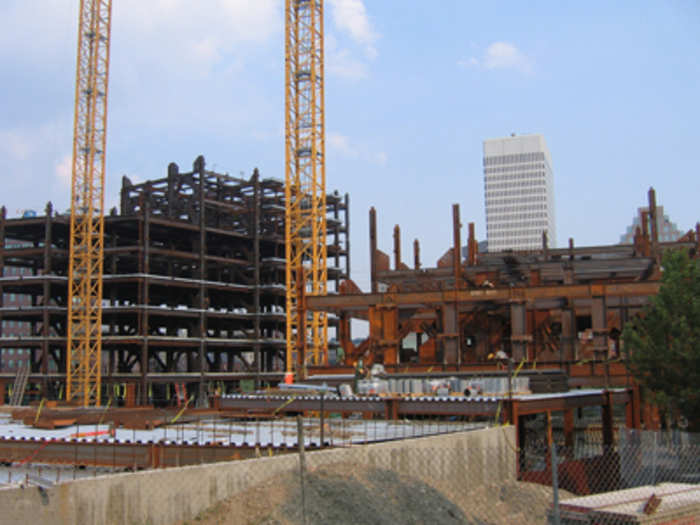
Rhode Island's coastal location shows up in its economy, with private marinas and shipbuilders among the most disproportionately large employers in the state.
Rhode Island's unemployment rate has dropped quite a bit in recent years, but at 5.9% in June, it is still above the 5.3% national rate. Rhode Island's job creation was middle of the road, with nonfarm payrolls growing by 1.2% between June 2014 and June 2015. On a brighter note, the 4.5% rate of year over year wage growth was the fifth highest among the states.
32. Connecticut

General Electric, No. 8 on the Fortune 500, calls Connecticut home, as do health insurance giants Aetna and Cigna. Not surprisingly, aerospace manufacture, insurance, and financial activities are among the most disproportionately large employers in the Constitution State.
While Connecticut's GDP per capita of $70,353 was the sixth best in the country, and its $1,278 average weekly wage was the fourth best, the state's house price growth of 0.40% was the fourth worst.
31. Nevada

The home of Las Vegas naturally has an outsize gaming sector. About 183,000 Nevadans are employed by Casino hotels, with another 10,000 employed by non-hotel casinos and other gambling establishments.
Nevada found itself in the middle of the states because of a few extreme scores on our rankings. On the positive side, the state had the second-highest rate of job growth among the states, with nonfarm payrolls growing by 3.5% between June 2014 and June 2015. The state's housing market has been recovering nicely after being slammed especially hard after the collapse of the housing bubble, with housing prices rising 10.11% between Q1 2014 and Q1 2015, the second-highest jump in the country.
On the negative side, Nevada's 6.9% unemployment rate is the third highest in the country, and the state's average weekly wage only grew by 1.6% between Q4 2013 and Q4 2014, the second-lowest growth rate among the states.
30. Oklahoma

The oil industry plays an outsize role in Oklahoma's economy. About 24,000 people work in the oil-and-gas-extraction industry, with another 37,000 in support activities for mining.
Like Nevada, Oklahoma scored very well on a few of our metrics and poorly on others. On the positive side, the state's 2014 GDP growth rate was 2.8%, the ninth-best among the states, and the state unemployment rate of 4.5% was much lower than average. On the negative side, job growth was slow, with a 0.6% year-over-year growth rate in nonfarm payroll jobs.
29. Wisconsin

Wisconsin's association with cheese and other dairy products is no accident: Some 17,000 Wisconsinites are employed in dairy product manufacturing, 13,000 in dairy cattle and milk production, and another 5,000 in dairy product wholesale.
Wisconsin scored close to average on most of our metrics. The state's June 2015 unemployment rate of 4.6% was quite a bit lower than the national rate of 5.3%, housing prices went up 5.09% between Q1 2014 and Q1 2015, right in line with the national change of 4.96%, and the state's Q4 2013-Q4 2014 wage growth of 3.4% was about the same as the national growth rate of 3.5%.
28. Montana

Montana is a big, wide-open state, and cattle ranching is a disproportionately large industry there. Montana's 3.9% unemployment rate was the eighth best among the states, but its average weekly wage of $794 was the fourth lowest.
27. Kentucky

Kentucky is famous for its bourbon, its horse races, and its coal. All three are disproportionately big employers in the state: About 4,000 Kentuckians work in distilleries, 1,300 in horse ranching, and 11,000 in coal mining.
Kentucky fell in the middle on most of our metrics. The state saw nonfarm payroll jobs rise by 2.2% between June 2014 and June 2015, close to the national rate of 2.1%. The state's average weekly wage was a bit lower than average, however, at just $836 compared to the national average of $1,035.
26. North Carolina

North Carolina is home to 27 Fortune 1000 companies, including Duke Energy, Lowe's, and Bank of America.
Job growth was healthy in the state, with a 2.4% increase in nonfarm payrolls between June 2014 and June 2015, slightly higher than the 2.1% national growth rate. The state's 2014 GDP per capita of $48,585 was a bit below the national level of $54,307.
25. Ohio
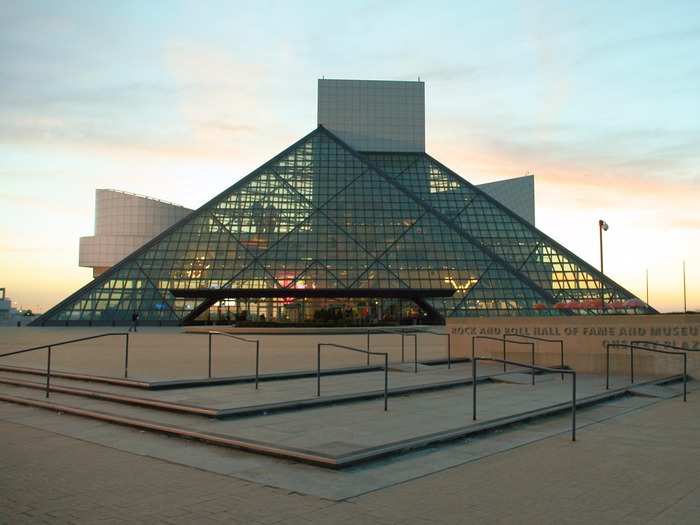
Ohio's industrial legacy lives on. About 31,000 Ohioans are employed in motor-vehicle parts manufacturing, with another 11,000 in motor-vehicle metal stamping.
Ohio's 2014 2.1% GDP growth was just below the national growth rate of 2.2%, and the state's 5.2% unemployment rate was just below the national 5.3% rate.
24. Hawaii

Hawaii is a gorgeous state, and tourism is a big part of the economy. Hotels employ about 38,000 residents of the state, with another 7,000 employed as tour operators and in sightseeing transportation.
Hawaii's unemployment rate of 4.0% was below the national rate of 5.3%, but the state's housing market was more sluggish than average, with home prices rising just 1.53%, lower than the national growth rate of 4.96%.
23. Delaware

Delaware has an extremely generous corporate law, and over half of US companies are legally incorporated in the state.
Delaware had a high 2014 GDP/capita, at $67,075, much higher than the national GDP per capita of $54,307. However, the state's year over year wage growth of just 1.5% was the lowest among the states.
22. Iowa

Agricultural industries are a big part of Iowa's economy. Agricultural equipment manufacturing, starch, and vegetable oil manufacturing, and breakfast-cereal manufacturing are three of the most disproportionately large industries in the state.
Iowa's 3.7% unemployment rate was the fifth lowest in the country. The state's 2014 GDP growth of just 0.4% was relatively anemic, however.
21. South Dakota
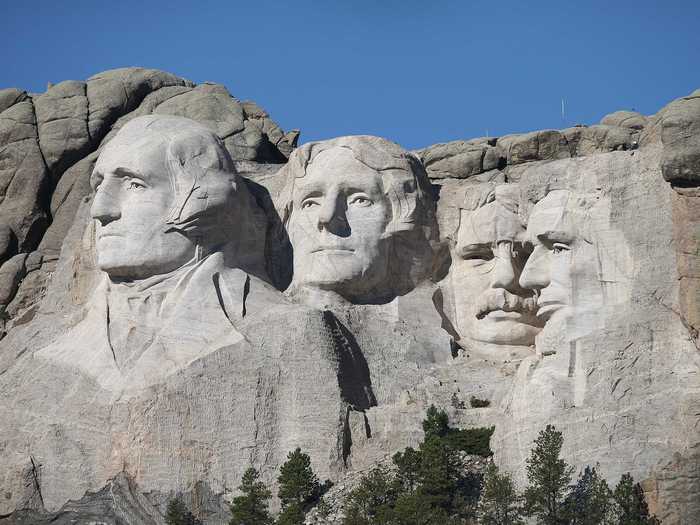
South Dakota's economy still relies heavily on agriculture. Grain farming and wholesale, livestock wholesale, and cattle production all employ South Dakotans at a higher rate than Americans as a whole.
While South Dakota's June 2015 unemployment rate of 3.8% was the sixth lowest in the country, the Q4 2014 average weekly wage was just $791, third lowest among the states.
20. Tennessee
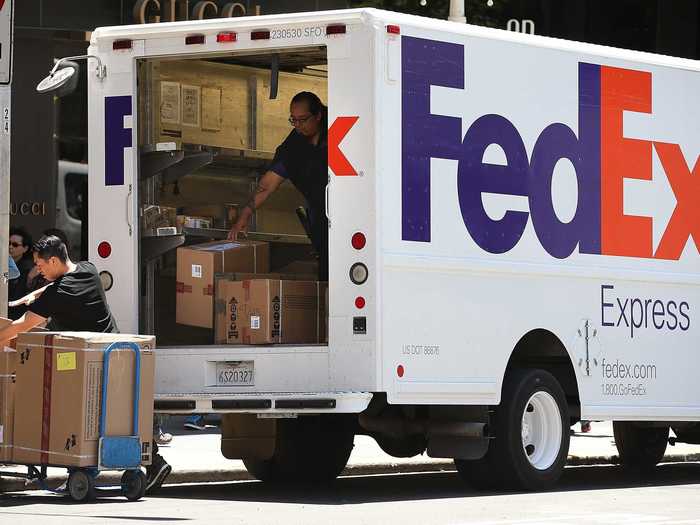
Tennessee is home to 20 members of the Fortune 1000, including shipping giant FedEx, discount retailer Dollar General, and hospital conglomerate HCA.
Tennessee scored about average on many of our metrics. The state's unemployment rate of 5.7% was a bit higher than the national 5.3% rate, and the average weekly wage in the state grew by 3.5% between Q4 2013 and Q4 2014, equal to the national growth rate.
19. Vermont

Coffee-pod conglomerate Keurig Green Mountain was founded in Vermont, where it has its headquarters.
Vermont's 3.6% unemployment rate was the fourth lowest in the country, but the state's 2014 GDP growth was rather sluggish at just 0.6%.
18. Georgia

Textiles are a disproportionately large part of Georgia's economy, with carpet and rug mills, fiber and yarn mills, and fabric mills all employing Georgians at a higher rate than other Americans.
Georgia's GDP grew by 2.3% in 2014, slightly higher than the 2.2% national growth rate. The state's unemployment rate of 6.1% continues to be higher than that of most other states.
17. Michigan

Detroit still looms large in Michigan: About 46,000 residents of Michigan work in auto and light-truck manufacturing, with tens of thousands more in related industries like metal stamping for cars and power train manufacturing.
Michigan's housing market has been improving, with home prices rising 6.4% between Q1 2014 and Q1 2015, somewhat faster than the national increase of 5.0%. The state's 2.2% growth in nonfarm payrolls between June 2014 and June 2015 was right in line with the US rate of 2.1%.
16. Minnesota
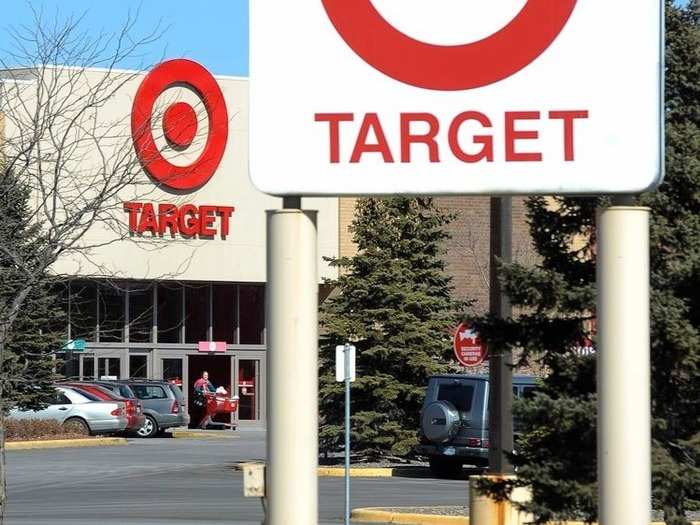
Minnesota is the headquarters for 25 Fortune 1000 companies, including Target, Best Buy, 2M, and General Mills. All four of those are headquartered in the Minneapolis-St. Paul region.
Minnesota's 3.9% unemployment rate was the eighth lowest among the states. The state's 2014 GDP per capita of $57,943 was a little higher than the national per-person economic activity of $54,307.
15. Idaho

Memory and computer-chip maker Micron Technologies — recently in the news after talk of a buyout by Chinese tech giant Tsinghua Unigroup that could draw the ire of US regulators — is based in Boise, Idaho.
Idaho's labor market is looking good, with an unemployment rate of just 4.0% and a 2.6% increase in nonfarm payrolls between June 2014 and June 2015. However, the state's per capita GDP of $39,127 and average weekly wage of $782 were both the second lowest among the states.
14. Nebraska

Agriculture and meat production are big parts of Nebraska's economy. About 26,000 Nebraskans are employed in animal slaughtering and processing, with thousands more in grain farming, cattle ranching, and agricultural-tool manufacturing.
Nebraska's unemployment rate of 2.6% was the lowest in the country in June 2015. The state's average wage rose an impressive 5.2% between Q4 2013 and Q4 2014. Despite that increase, the Q4 2014 average weekly wage was just $837, quite a bit lower than the national average of $1,035.
13. Wyoming

Oil and coal mining are a big part of Wyoming's economy. About 6,500 citizens of the state work in coal mining, 4,600 in oil and gas drilling, 4,000 in oil- and gas-pipeline construction, and 14,000 in mining-support activities.
Wyoming's 2014 GDP growth rate of 5.1% and per capita GDP of $75,648 were both the third highest in the country. However, Wyoming was one of just two states to have fewer people working in the state in June 2015 than in June 2014, with the number of nonfarm payroll jobs in the state dropping by 0.7%.
12. Florida

With Disney World, Sea World, and Universal Studios all located in the Sunshine State, it's not surprising that about 69,000 Floridians are employed in the amusement and theme-park industry.
Florida's housing market, one of the worst hit by the collapse of the 2000s housing bubble, has been recovering nicely. House prices went up by 8.7%, the third-fastest growth rate among the states. However, Florida is kept out of the top 10 states with its below average per capita GDP of $42,222.
11. California

The nation's largest state is home to 10% of the Fortune 1000, with 101 companies on the list having their headquarters in California. These include Silicon Valley giants like Apple, HP, Google, Intel, and Oracle, Disney, and Wells Fargo.
While California's 2014 GDP growth of 2.8% was the ninth highest among the states and the house price increase of 7.5% was the fifth highest, the June unemployment rate of 6.3% was the ninth highest, hurting California's overall score.
10. Oregon

Athletic-apparel and shoe giant Nike was founded in Oregon, where it still has its headquarters.
Oregon's 3.2% increase in nonfarm payroll jobs between June 2014 and June 2015 was the fifth best in the country, and its 3.6% GDP growth in 2014 was the sixth best.
9. New York
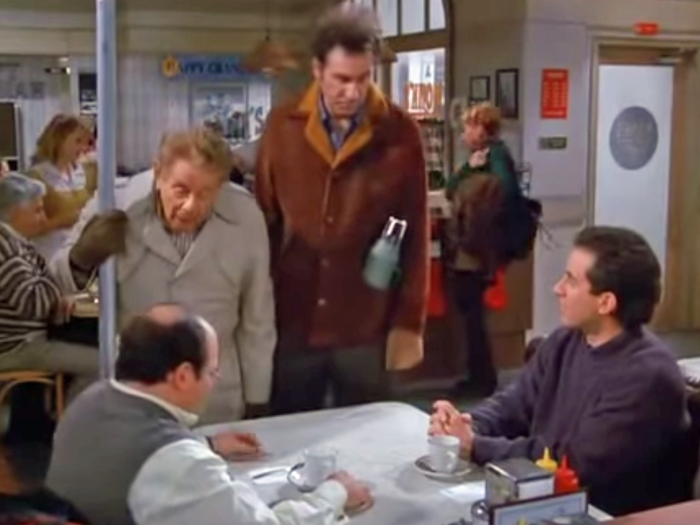
Business Insider's Sarah Schmalbruch recently pointed out that New York City is the greatest city in the world, and so it's no surprise that the state economy that includes the financial capital of the US and arguably the world falls in the top 10.
New York had the second-highest average weekly wage in the country, at $1,321. The state's GDP per capita of $71,128 was the fifth highest. However, the June unemployment rate of 5.5% remains just above the national rate of 5.3%.
8. New Hampshire

The industrial legacy of New England lives on in New Hampshire. About 7,300 residents work in electronic-instrument manufacturing, 5,000 in semiconductor and electronic-component manufacturing, and 3,700 in miscellaneous fabricated-metal product manufacturing.
New Hampshire's 3.8% unemployment rate was the sixth lowest among the states, and its average weekly wage grew by a very impressive 6.3% from Q4 2013 to Q4 2014, the second highest rate in the country.
7. Utah

Utah is home to four Fortune 1000 companies, the largest of which is the Huntsman chemical corporation.
Utah's job market is booming. The number of nonfarm payrolls in the state grew by 4.3%, the fastest growth rate in the country. Meanwhile, Utah's 3.5% unemployment rate was the third lowest.
6. Massachusetts

With its several colleges and universities providing a highly educated workforce, Massachusetts is a major hub of finance and high tech. Big companies like insurer Liberty Mutual, retail giant T.J. Maxx, and defense contractor Raytheon all have their headquarters in the state.
Massachusetts' 2014 per capita GDP of $68,185 was the seventh best among the states, and the state had the third highest Q4 2014 average weekly wage, at $1,315.
5. Washington

Ten Fortune 500 companies are based in Washington, including discount retail giant Costco, ubiquitous coffee chain Starbucks, and huge tech companies Amazon and Microsoft.
Washington's housing market is doing quite well: House prices rose 7.6% between Q1 2014 and Q1 2015, the fourth-highest growth rate among the states. The state's 3.5% increase in nonfarm payrolls between June 2014 and June 2015 was the third best in the country.
4. Texas

While Texas has a very diverse economy, and despite turbulence in prices in the last year, oil remains a big part of the Texas story. About 103,000 Texans are employed in the oil-and-gas-extraction industry, and tens of thousands more are in related industries, like pipeline construction, mining support activities, and petrochemical manufacturing.
Texas performed very well on all seven of our measures, ranking no worse than 13th in each. Particularly impressive were the state's second best in the country 2014 GDP growth rate of 5.2% and sixth best housing price increase of 6.5%.
3. District of Columbia
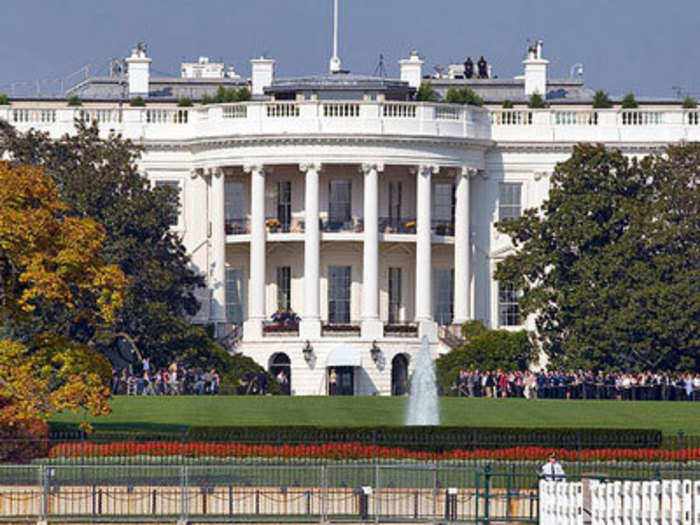
Unsurprisingly, the federal government is the dominant factor in the economy of the nation's capital. About 31% of workers are employed by the federal and local governments in the district.
DC is quite different from the states, and it had some extreme scores on our measures. Washington came up as high in the ranking as it did because of its absolutely stunning per capita GDP of $175,253 — over three times the US per capita GDP of $54,307. Also greatly helping DC's standing was its equally impressive average weekly wage of $1,696, about $375 higher than second-place New York.
On the downside, the district's 7.0% unemployment rate was the second highest in the country, and housing prices fell 0.8% between Q1 2014 and Q1 2015, a situation that happened in only two states.
2. Colorado

Dish Network, Western Union, and Chipotle are three of the 23 Fortune 1000 companies headquartered in Colorado.
Colorado's housing market had the most improvement in the country, with house prices rising 11.2% between Q1 2014 and Q1 2015. The state's 2014 GDP growth rate of 4.7% was also very strong, and was the fifth best among the states.
1. North Dakota
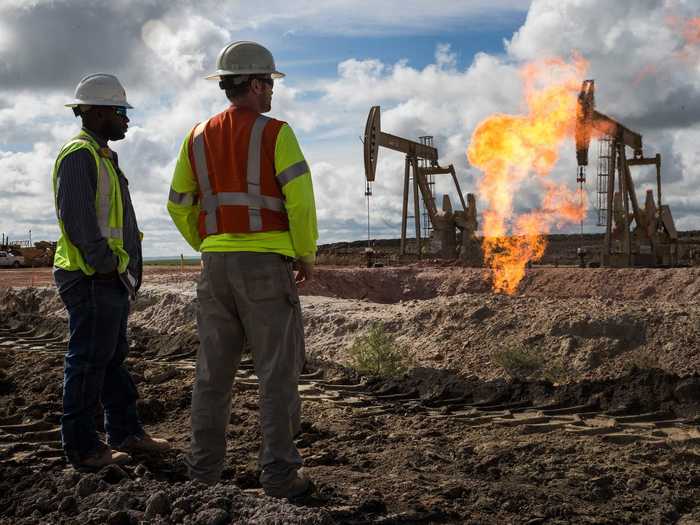
North Dakota had the strongest economy in the country. The state's economy has seen a major boon from the rise of oil fracking in the last few years, and despite chaos in oil prices recently, North Dakota's economy remains robust.
North Dakota's 3.1% unemployment rate was the second lowest in the country. The state also had both the highest 2014 GDP growth rate of 6.3% and the highest average wage growth rate of a whopping 7.1%.
Popular Right Now
Popular Keywords
Advertisement